4. Explore Zone
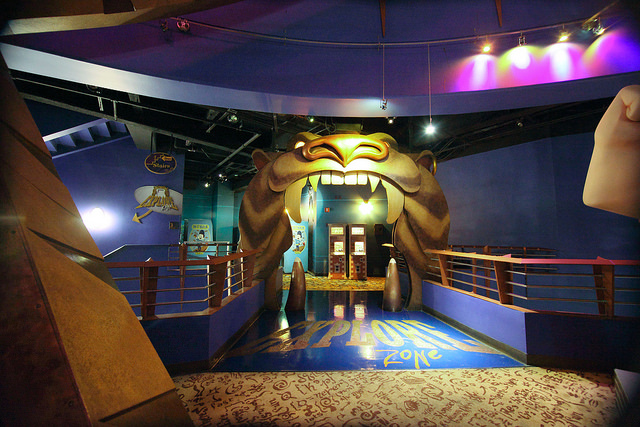
Returning to Ventureport and across another Gateway bridge, this time we enter the final of DisneyQuest’s four areas: Explore Zone.
Explore Zone features a few of DisneyQuest’s more well-known attractions, including Aladdin’s Magic Carpet Ride (not to be confused with the very dissimilar Magic Carpets of Aladdin that opened at Magic Kingdom three years later). Seated on individual motorcycle style seats, we can put on another large VR headset to become totally immersed in a magic carpet ride through Agrabah.
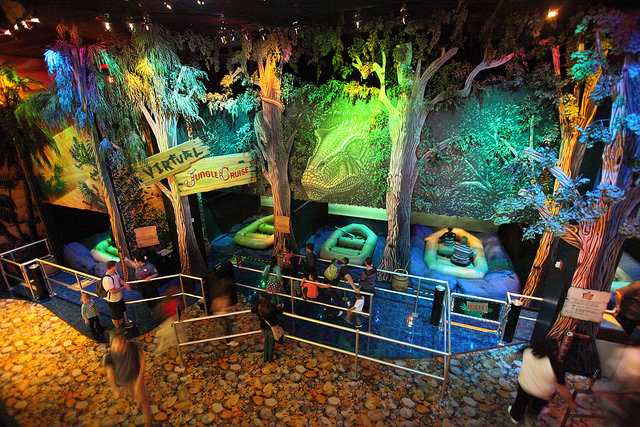
The Virtual Jungle Cruise was another memorable addition, even if it wasn’t one of DisneyQuest’s best. Seated in “inflatable rafts” on a motion base, guests would paddle feverishly to escape the reach of digital dinosaurs projected on a screen ahead as the raft bobbed and bucked along the rapids.
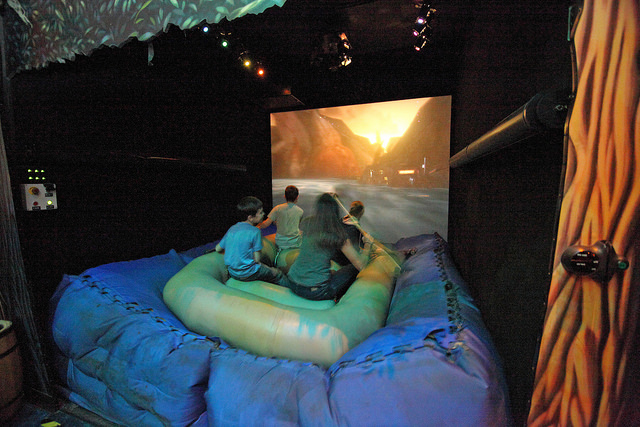
Still, the effect might not have been totally convincing, and guests armed with oars tended to notice that, paddle or not, the ride continued unchanged. You can get a look at the experience in this video.
The most technologically advanced DisneyQuest attraction (by way of being the only attraction added after opening, replacing a Treasure of the Incas remote-controlled attraction) is Pirates of the Caribbean: Battle for Buccaneer Gold.
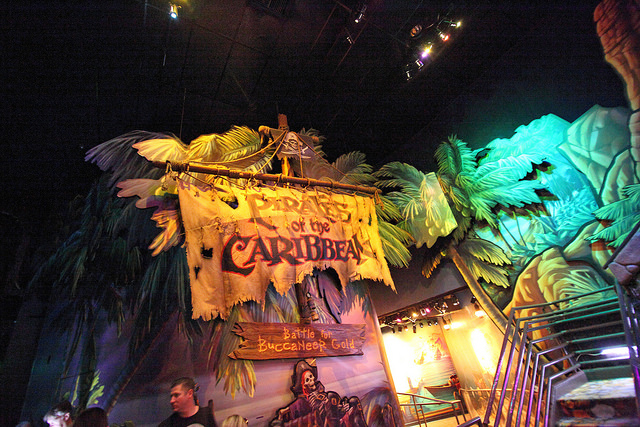
Guests here would step onto the prow of a ship, with digital wrapped screens recreating the ocean beyond. Then, manning real cannons, we can shoot digital cannonballs at enemy vessels, cheering, singing, and plundering. Sort of a precursor to Toy Story Midway Mania, you can get a glimpse of the game here.
The problem
As you can imagine, the wonders of DisneyQuest were truly cutting edge… A decade before the first iPhone would even become available, DisneyQuest offered glimpses into virtual reality, high definition video, motion sensors, and true interactive multimedia features that were still years away from public consumption.
In fact, DisneyQuest was like a living, breathing test lab where you were able to prototype the most astounding technologies you had likely ever seen, all wrapped into an appropriately-epic and stylistically-current (read: 1990s) package that looked and felt like it had its finger on the pulse of pop culture. DisneyQuest was smart, cool, stylish, and impressive. However…
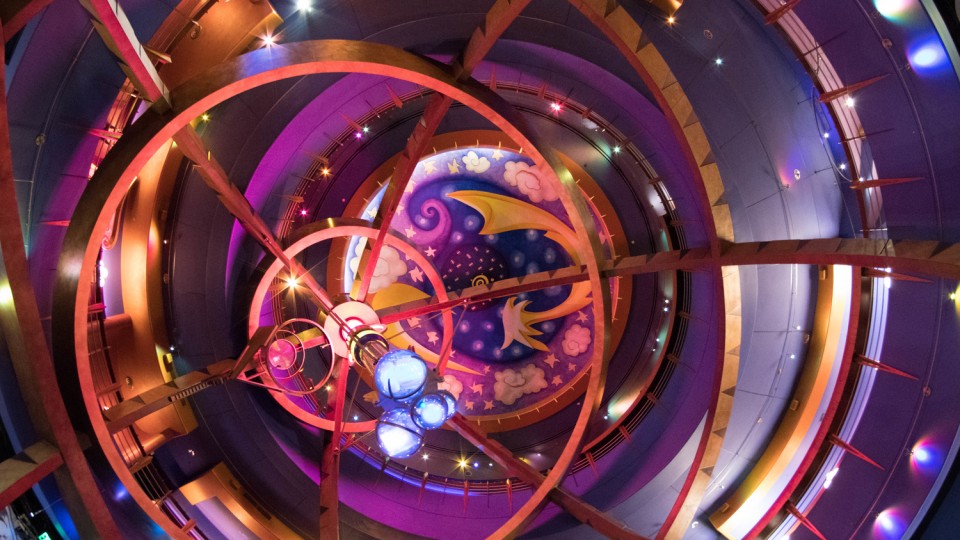
Remember we specifically noted that our walkthrough shows us DisneyQuest “as it appeared in its earliest years.” The problem is simple: that’s also how it appeared in its last years, nearly two decades later. In other words, a visit to DisneyQuest in 2017 offered exactly the same games, technology, and hardware… and if you hadn’t noticed, technology today looks… well… a little different than it did in 1998.
DisneyQuest wasn’t always doomed. It was Disney’s choice to leave the attraction to rot and rust, outright refusing to upgrade its software or hardware for twenty years. Why? That’s the interesting part… Read on as we wrap up the story of its disastrous downfall…
Expansion and retreat
Disney Regional Entertainment must’ve been pleased with the reaction to – and revenue from – Orlando’s DisneyQuest, because their world domination action plan proceeded outward from there.

DisneyQuest Chicago opened on June 16, 1999. A virtual clone of the Orlando facility, Chicago’s 90,000 square foot outpost was a natural next step in that it secured Disney a footprint in the third most populous city in the United States (behind New York and Los Angeles), a Midwest hub, and (coincidentally) Walt Disney’s birthplace. Located on Rush and Ohio Streets (just beyond the city’s Magnificent Mile), the Illinois DisneyQuest brilliantly adapted the now-iconic “box” façade for an urban landscape and seemed positioned on the most prime real estate imaginable.
If you can stomach the ’90s nostalgia, you can relive the opening of Chicago’s DisneyQuest (and get a glimpse of many of the attractions inside) via live opening day coverage from ABC News:
The opening of a second DisneyQuest primed Disney for similar installations in other leading cities. A DisneyQuest Philadelphia was announced with initial ground broken, and Toronto was eyed as a fourth facility. It seemed that DisneyQuest would indeed bring the magic of a Disney vacation “home,” establishing Disney as a regional player in family entertainment.
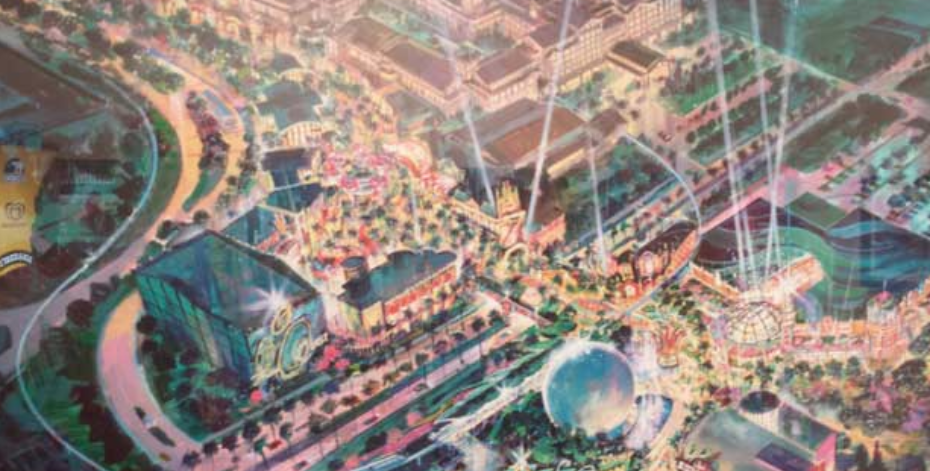
By the end of the ’90s – after Disney had officially cancelled the Possibilityland: WESTCOT – work was already underway in Anaheim expanding Disneyland Park into the Disneyland Resort. While the Declassified Disaster: Disney’s California Adventure would be the resort’s new headliner, an accompanying Downtown Disney District had included in its Phase II expansion a DisneyQuest of its own (above), next to fellow Disney Regional Entertainment attraction, the ESPN Zone bar and grill.
So even if only Orlando’s prototype (1998) and the Chicago follow-up (1999) were up and running, it seemed certain that DisneyQuest was well on its way to becoming a global brand, with Philadelphia, Toronto, and Anaheim on deck.
But on September 4, 2001 – after a run of about two years – Chicago’s DisneyQuest unexpectedly closed its doors. Randall Baumberger, senior vice president of Disney Regional Entertainment told the LA Times:
“We have concluded that the expected returns on the investment required to achieve DisneyQuest’s cutting-edge technology standard in a stand-alone environment will not meet the company’s financial requirements.”
Look to Disney’s early Tomorrowlands or Epcot’s Future World to see what he meant… any sincere determination to actually predict or showcase cutting edge technologies requires enormous (not to mention continuous) investment. There is no “until…” To keep DisneyQuest cutting edge would require extensive financial backing forever.
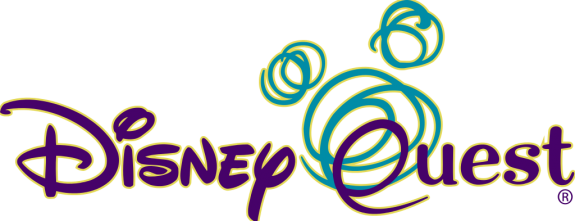
And as the New Millennium came and went, it was already clear that the technologies on display in DisneyQuest – both in Orlando and Chicago – were becoming less astounding by the day… and thus, less worthy of guests’ admission or (more importantly) their return visit.
Put another way, visitors came to DisneyQuest… the problem is, they didn’t come back. And long term, it was clear that DisneyQuest couldn’t keep up with the ever-increasing demands of technology… all while tinkering with the price that Midwest families would be willing to pay. Joe DiNunzio – the executive tasked with developing DisneyQuest – looked back later with Polygon:
“The business clearly failed, because it didn’t thrive. It didn’t expand to 10 and then 25 units. It didn’t deliver profit targets that were part of the plan. So, you know, on any reasonable measurement, it did not meet its objectives.”
There’s a suggestion there that, although Disney’s spokesperson assured the media that DisneyQuest Chicago was successful, the company would altruistically shutter it rather than let it limp along without investment. It’s almost noble to imagine that Disney would rather have no regional entertainment than sub-par regional entertainment… Until you catch up on what happened in Orlando…


